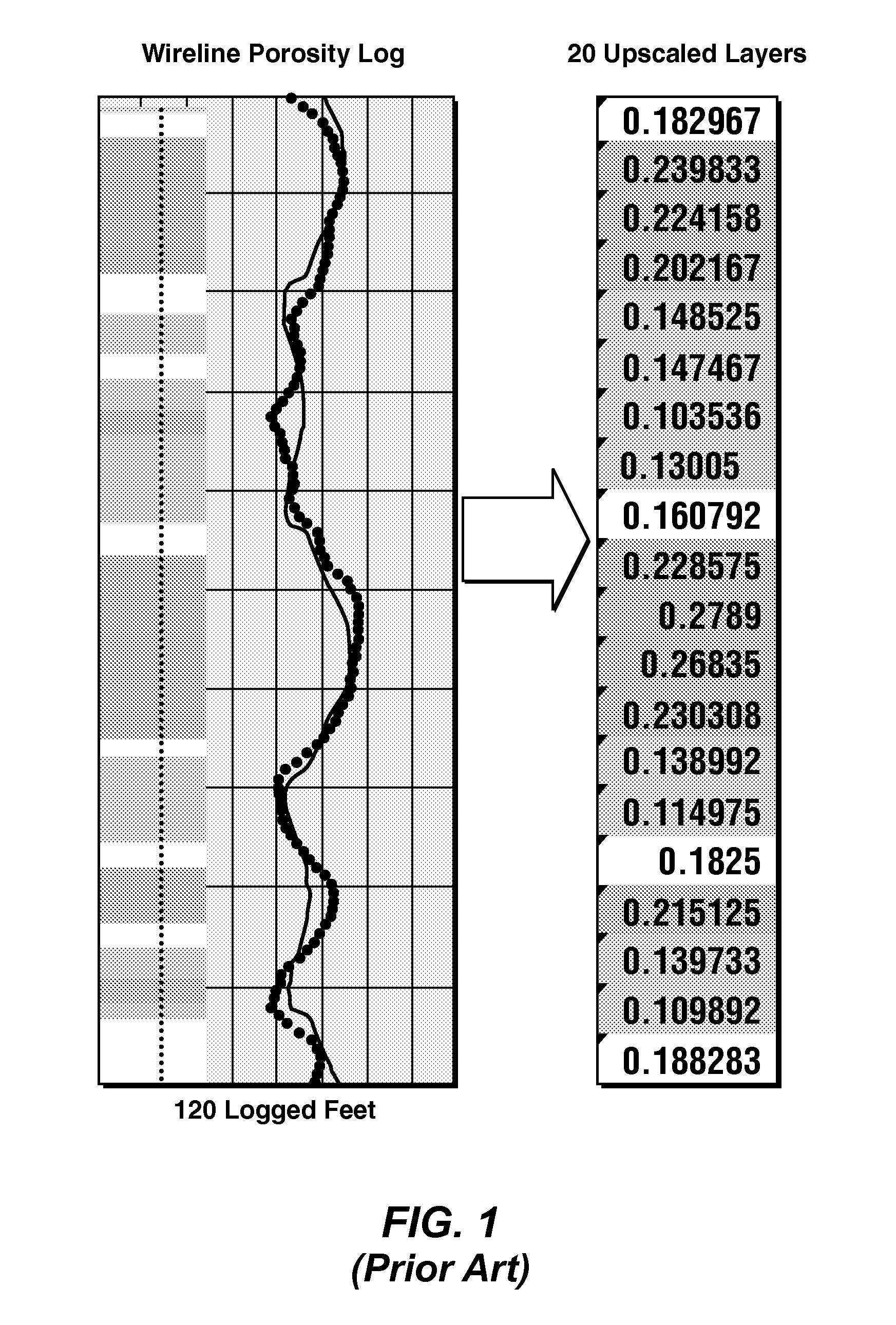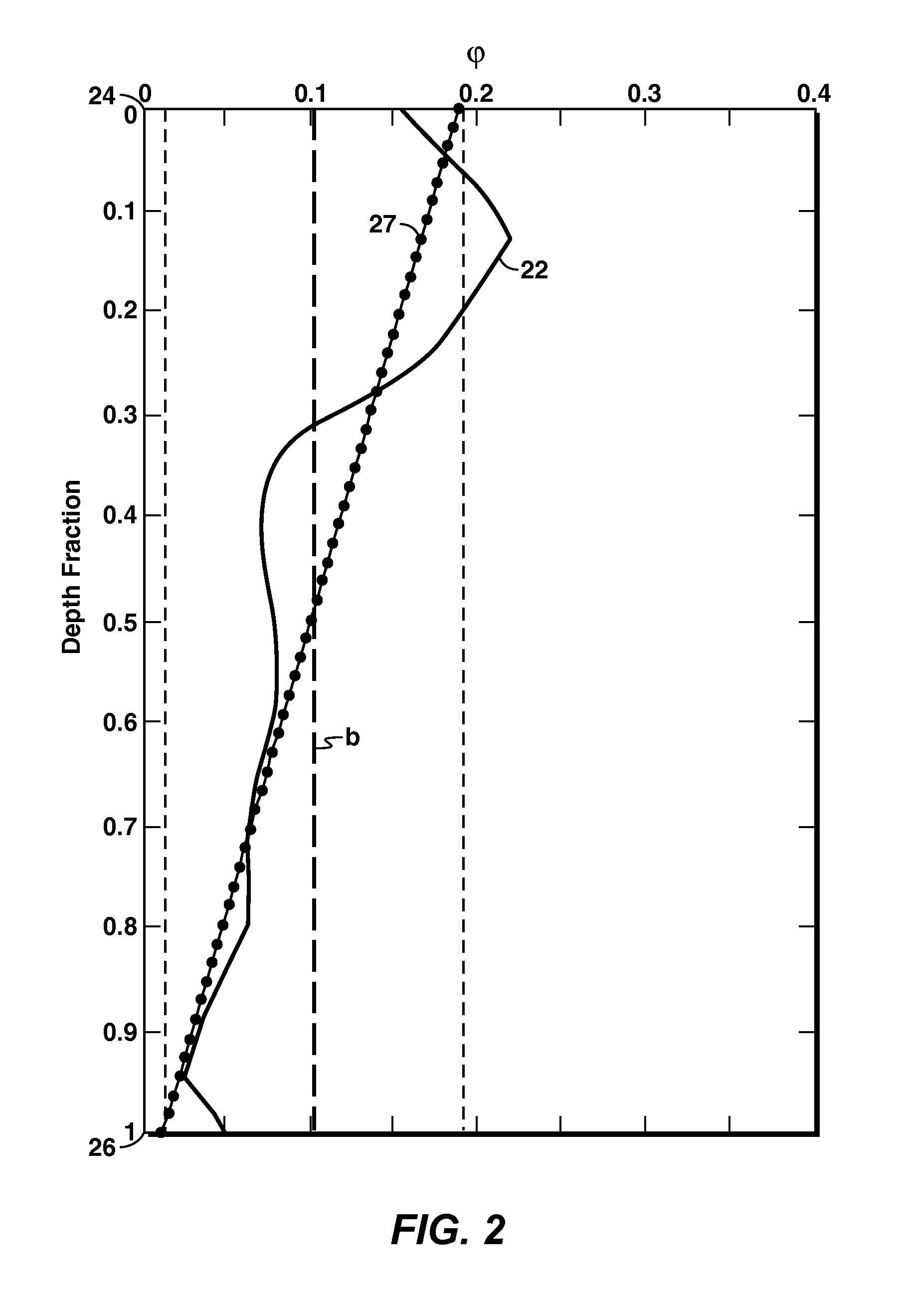Reservoir Quality Characterization Using Heterogeneity Equations With Spatially-Varying Parameters
a technology of heterogeneity equations and spatial variables, applied in the field of geologic modeling, can solve the problems of inability to capture information at scales smaller, cell negatively affecting computer processing times, memory usage and storage space requirements, and models that are too large become impractical for us
- Summary
- Abstract
- Description
- Claims
- Application Information
AI Technical Summary
Benefits of technology
Problems solved by technology
Method used
Image
Examples
Embodiment Construction
[0052]Specific embodiments are described in the following detailed description section. To the extent the following description is specific to a particular embodiment or a particular use, this is intended to be for example purposes only and simply provides a description of the embodiments provided herein as representative examples of the invention. Accordingly, the disclosed aspects are not limited to the specific embodiments described below, but rather include all alternatives, modifications, and equivalents falling within the spirit and scope of the appended claims.
[0053]Some portions of the detailed description which follows are presented in terms of procedures, steps, logic blocks, processing and other symbolic representations of operations on data bits within a computer memory. These descriptions and representations are the means used by those skilled in the data processing arts to most effectively convey the substance of their work to others skilled in the art. In this detaile...
PUM
 Login to View More
Login to View More Abstract
Description
Claims
Application Information
 Login to View More
Login to View More - R&D
- Intellectual Property
- Life Sciences
- Materials
- Tech Scout
- Unparalleled Data Quality
- Higher Quality Content
- 60% Fewer Hallucinations
Browse by: Latest US Patents, China's latest patents, Technical Efficacy Thesaurus, Application Domain, Technology Topic, Popular Technical Reports.
© 2025 PatSnap. All rights reserved.Legal|Privacy policy|Modern Slavery Act Transparency Statement|Sitemap|About US| Contact US: help@patsnap.com



